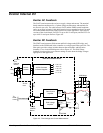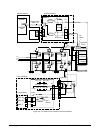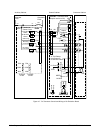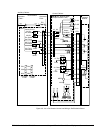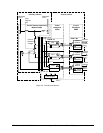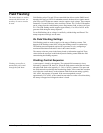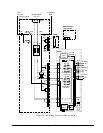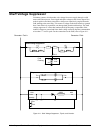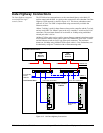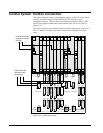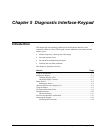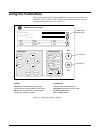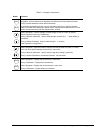
4-16
•
••
•
Chapter 4 Terminal Board I/O and Equipment Connections GEH-6632 EX2100 User’s Guide
Field Flashing
The station battery is used to
initiate the field current. An
auxiliary ac source can also
be used.
Field flashing relays 53A and 53B are controlled from drivers on the EMIO board,
through pilot relays on EXTB. In redundant control, the three driver signals actuate
pilot relays on EXTB that are contact voted to output a single voltage. These outputs
actuate the 53A and 53B relays in the Auxiliary Cabinet. The 53A and 53B contacts
put dc voltage from the station battery across the generator field, as shown in Figure
4-10. The field flashing module supplies approximately 15 to 20% of AFNL to the
generator field during the startup sequence.
For ac field flashing, the ac voltage is rectified by a diode bridge and filtered. The
startup sequences and logic are the same.
Dc Field Flashing Settings
Field flashing panels are used to supply a wide range of flashing currents. This
happens if the flashing control fails, leaving the flashing current on continuously.
The flashing current magnitude required for a generator is set by configuring a
maximum and minimum allowable value in the control module.
The current values are preset in the factory based on information supplied. These
values define the envelope in which the hysteretic flashing control holds the field
current during the flashing sequence.
Flashing Control Sequence
Flashing current flow is
monitored by the control
through the field shunt.
A start request is issued by the operator. The optional field contactor(s) closes,
followed by contactor 53B, then 53A. When the field current reaches the maximum
allowable field flash value (typically 15 - 20% of AFNL), contactor 53A opens and
the field current decays through the freewheeling diodes. If the control has not taken
over before the current decays to the minimum field flash current setting, typically
10% AFNL, the sequence is repeated. If the current magnitude exceeds
approximately 25% AFNL, or the control has not taken over after a fixed time delay,
the startup is stopped and a diagnostic alarm is issued.



